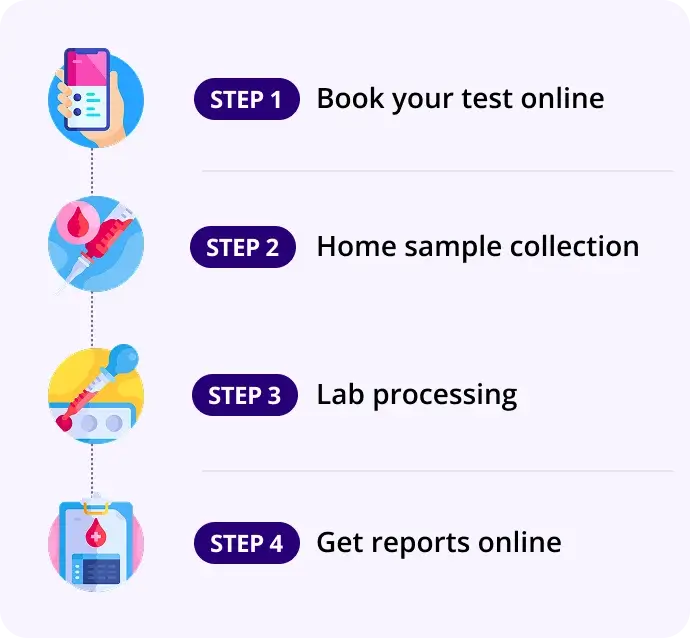Estradiol
Report in 16Hrs
At Home
No Fasting Required
Details
Evaluate menstrual and fertility issues
₹249₹605
59% OFF
🧪 What is Estradiol (E2)?
Estradiol is the most potent form of estrogen, a steroid hormone primarily produced in the ovaries (in females), testes (in males), and adipose tissue and adrenal glands in both sexes. It plays a central role in regulating:
- Female reproductive cycle
- Ovulation
- Secondary sexual characteristics
- Bone health
- Lipid metabolism
❓ Why is the Estradiol Test Done?
To:
- Evaluate menstrual and fertility issues
- Monitor ovarian function
- Assess puberty progression
- Investigate gynecomastia or testicular function in males
- Diagnose estrogen-producing tumors
- Monitor hormone replacement therapy (HRT)
- Guide ovulation induction in assisted reproduction (e.g., IVF)
📊 Normal Range of Estradiol
Group | Normal Estradiol Levels (pg/mL) |
|---|---|
Women – Follicular phase | 30 – 120 |
Women – Ovulatory peak | 130 – 400 |
Women – Luteal phase | 70 – 250 |
Postmenopausal women | < 30 |
Men | 10 – 50 |
Children (prepuberty) | < 20 |
⚠️ Values may vary based on lab method and unit (sometimes reported in pmol/L).
📈 Interpretation of Estradiol Results
Estradiol Level | Clinical Interpretation |
|---|---|
🔺 High E2 | - Estrogen-producing tumors (e.g., granulosa cell tumor) |
🔻 Low E2 | - Menopause |
🧠 Associated Organs and Conditions
Organ | Role |
|---|---|
Ovaries | Primary source in premenopausal women |
Adrenal glands | Produce precursors converted to estradiol |
Testes | Small amount produced in men via aromatization |
Liver | Metabolizes estradiol; dysfunction affects levels |
Brain | Estradiol influences hypothalamic-pituitary axis |
Bones & Cardiovascular system | Maintains density and vascular health (especially in women) |
🔄 Related / Follow-Up Tests
- FSH (Follicle-Stimulating Hormone)
- LH (Luteinizing Hormone)
- Progesterone – for ovulation and cycle tracking
- AMH (Anti-Müllerian Hormone) – for ovarian reserve
- Testosterone and DHEAS – for hyperandrogenism
- Prolactin – for hypothalamic/pituitary function
- Pelvic Ultrasound – for structural evaluation (PCOS, tumors)
- Karyotyping – if suspected genetic cause (e.g., Turner)
🧬 Estradiol in Fertility Monitoring
- Estradiol rises in the follicular phase and peaks before ovulation.
- It helps assess follicular development during fertility treatment (IVF).
- Very high levels (>3000 pg/mL) may indicate risk for ovarian hyperstimulation syndrome (OHSS).
📝 Summary
Parameter | Summary |
|---|---|
What | Estradiol is the main estrogen hormone involved in female reproductive health |
Why test | For fertility, menstrual irregularities, puberty disorders, HRT monitoring, tumors |
Normal Range | Varies by gender and menstrual phase (see above) |
High Estradiol | May suggest PCOS, tumors, fertility treatment, liver disease |
Low Estradiol | Seen in menopause, ovarian failure, hypothalamic dysfunction |
Follow-up | FSH, LH, progesterone, ultrasound, hormonal profile |
How our test process works!

